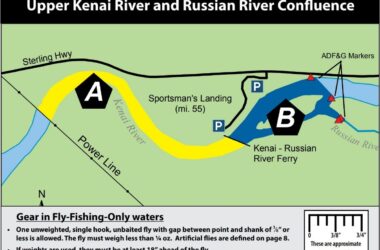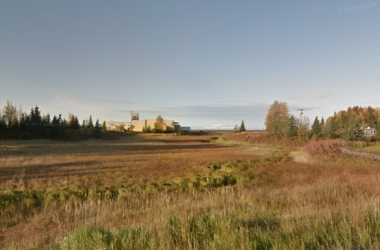The Department of the Interior announced a final rule to revise the Bureau of Land Management’s (BLM) oil and gas leasing regulations on Friday, Apr. 12. This rule will ensure a balanced approach to development, provide a fair return to taxpayers, and help prevent drilling activities from conflicting with the protection of important wildlife habitats or cultural sites.
The Fluid Mineral Leases and Leasing Process rule revises outdated fiscal terms of the onshore federal oil and gas leasing program—including bonding requirements, royalty rates, and minimum bids—increasing returns to the public and disincentivizing speculators and irresponsible actors. The rule is the BLM’s first comprehensive update to the federal onshore oil and gas leasing framework since 1988, the first update to minimum bonding levels since 1960, and the first increase in royalty rates in more than 100 years.
The rule codifies fiscal provisions included in the Inflation Reduction Act and implements recommendations from the Department’s Report on the Federal Oil and Gas Leasing Program.
“These are the most significant reforms to the federal oil and gas leasing program in decades, and they will cut wasteful speculation, increase returns for the public, and protect taxpayers from being saddled with the costs of environmental cleanups,” said Secretary Deb Haaland. “Alongside the historic investments we are making through President Biden’s Investing in America Agenda to clean up orphaned oil and gas wells, these reforms will help safeguard the health of our public lands and nearby communities for generations to come.”
The rule will guide BLM efforts to focus oil and gas leasing in areas that are the most likely to be developed — areas with existing infrastructure and high oil and gas potential — lessening development pressure on areas that contain sensitive wildlife habitat, cultural resources, high recreational usage, or other special resources and values. This approach will provide transparency and clarity for industry while better managing public lands for other important resources.
“This rule will give industry additional certainty about lease terms moving forward and give the public the certainty that their voices will be heard when the BLM is proposing areas for leasing,” said Principal Deputy Assistant Secretary for Land and Minerals Management Dr. Steve Feldgus. “It also addresses a number of longstanding Government Accountability Office (GAO) and Inspector General recommendations, ensuring we have a modern oil and gas leasing program that protects the public’s interests.”
“Our public lands are owned by all Americans, and the Bureau of Land Management remains committed to managing them in a balanced, responsible way,” said BLM Director Tracy Stone-Manning. “This rule will help protect critical wildlife habitat, cultural resources, and recreational values, and it will ensure a fair return for American taxpayers.”
The rule also updates minimum bonding amounts for federal oil and gas operations for the first time in over 60 years, helping to ensure that taxpayers are not left with the bill for cleaning up orphaned wells. The GAO noted that the BLM is responsible for managing thousands of idled wells that pose a risk of becoming orphaned. The increased bonds better reflect the actual costs of reclaiming wells, which means those costs are borne by oil and gas companies rather than taxpayers. More about updates to bonding are included in the rule here.
Key elements of the rule include:
- Bonding Requirements: The rule increases the minimum lease bond amount to $150,000 and the minimum statewide bond to $500,000, and it eliminates nationwide and unit bonds. The previous lease bond amount of $10,000 — established in 1960 — no longer provided an adequate incentive for companies to meet their reclamation obligations, nor does it cover the potential costs to reclaim a well should this obligation not be met, leaving taxpayers at risk for the cost of cleanup. Bond amounts will be adjusted for inflation every ten years.
- Protecting Wildlife and Cultural Resources: The rule helps steer oil and gas development away from important wildlife habitat and important cultural sites by establishing BLM’s preference to offer lands for lease that are close to existing infrastructure or have high potential for oil and gas production.
- Fiscal Terms: A number of fiscal terms are changed to reflect provisions of the Inflation Reduction Act, including:
- Royalty rates for leases are set at 16.67 percent until August 16, 2032—ten years after enactment of the Inflation Reduction Act—then 16.67 percent will become the minimum royalty rate. Previously, the minimum royalty rate was 12.5 percent.
- Minimum bids: The minimum amount companies can bid at auctions for federal oil and gas leases increases to $10 per acre, up from $2 per acre. After August 16, 2032, that amount will be regularly adjusted for inflation.
- Base, or minimum, rental rate: Leases will include a rental of $3 per acre per year during the first two-year period beginning upon lease issuance, then $5 per acre per year for the subsequent 6 years, and then $15 per acre per year thereafter. After August 16, 2032, those rental rates will become minimums and are subject to increase. Previously, companies paid $1.50/acre for each of the first five years of holding a lease, then $2/acre for the next five years.
- Expressions of Interest: The Inflation Reduction Act established a new $5/acre fee for expressions of interest. The rule implements how the fee will be collected.






